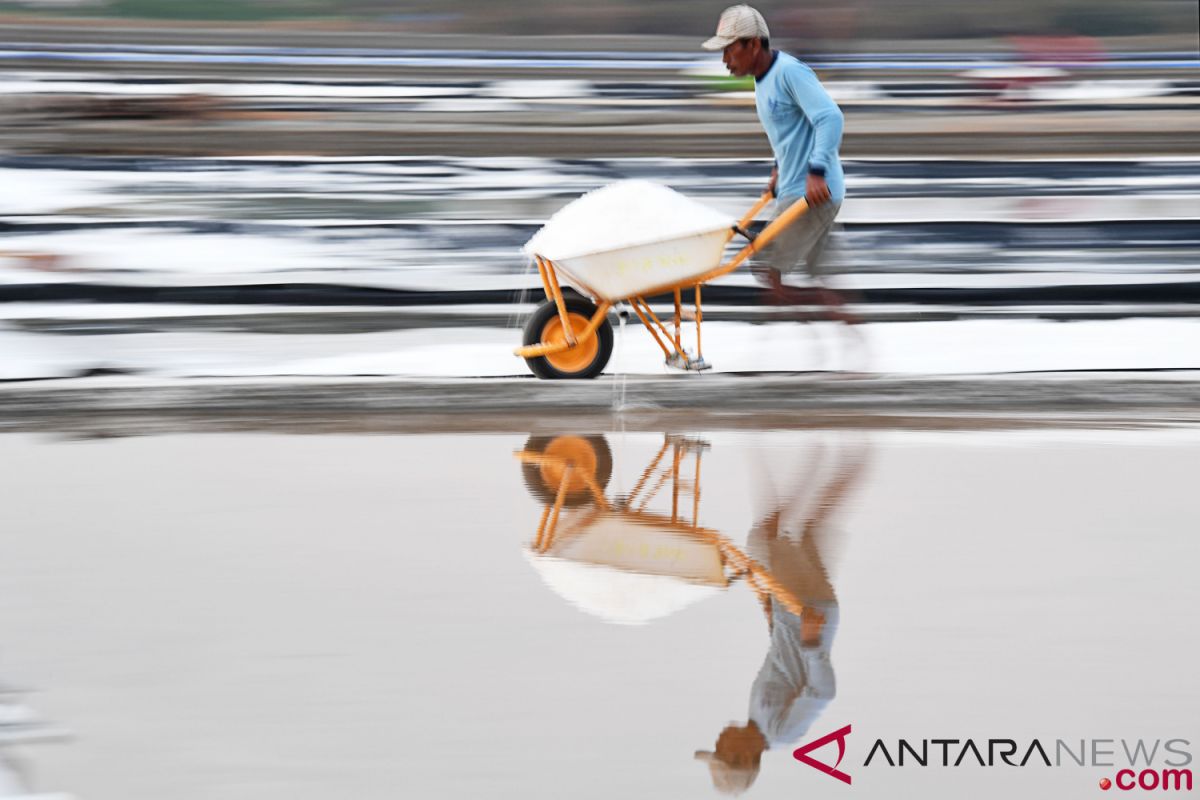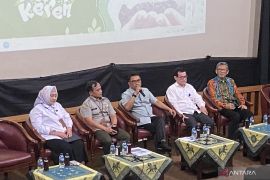Therefore, the government is going all out to achieve its target of becoming self-sufficient in salt production next year and enhance domestic market for domestically produced salt.
Indonesia was able to become self-sufficient in salt production for a period of four years from 2012 to 2015, but due to weather anomalies, it has been importing the commodity since 2016.
The government is determined to regain its earlier position of being self-sufficient in salt production. Besides that, salt stakeholders have proposed a target to achieve the self-sufficient target by 2020. But Coordinating Minister for Maritime Affairs Luhut Binsar Pandjaitan wanted the target to be achieved in 2019.
"They (stakeholders) proposed a target to be achieved in 2020, but I urged that it should be accelerated to achieve the target in 2019," Luhut Binsar Pandjaitan noted after a coordination meeting at his office in Jakarta in Aug. 2017.
It seems that the government still had to work hard to stop import of salt, particularly salt for industry. Data from the state-owned salt company PT Garam revealed that the national demand for salt has reached 4.04 million tons per annum comprising 1.3 million tons of consumer salt and 2.74 million tons of industrial salt.
According to the Coordinating Ministry of Maritime Affairs (Kemenko), Indonesia has achieved self-sufficiency in consumer salt and would continue to push for the development of salt production for national industry or industrial salt.
Maritime Affairs and Fisheries Ministry`s Deputy for Natural Resources and Services Coordination Agung Kuswandono in Jakarta recently (Sept 20) said that the government had set itself the target of being self-sufficient in salt in 2019.
A number of efforts, including expansion of salt land, have been carried out even though it has not yet been fully completed to date.
Unfortunately, Kuswandono acknowledged there were still a number of obstacles to the expansion of salt fields, including the problem of land use rights that had not yet been resolved.
Moreover, the sodium chloride (NaCl) content of domestically produced consumer salt which should ideally be in the range of 95-97 percent is still lower.
He revealed that the highest salt content in the country is only around 94 percent, so his party also plans to build a salt processing plant as a next target.
Kuswandono will also facilitate investors who will build salt industry as well as processing plants.
With the increase, both in terms of quantity and quality in salt production, Indonesia in the future can become one of the largest salt producers in the world.
Observer of the marine and fisheries sector, Moh. Abdi Suhufan stated that the government needs to take steps that systematically increase the productivity of farmers` salt ponds in various regions.
Suhufan also considered that until now efforts to increase salt production in various regions have not been made seriously.
According to him, after the drop in production in 2016 which was only 150,000 tons or 4.1 percent of the production target of 3.6 million tons, the government`s actions to increase salt production have not been seen in real terms.
Suhufan, who is Indonesia`s National Destructive Fishing Watch (DFW) coordinator, believes that in the past four years, salt production has never reached the target set by the government.
Minister of Maritime Affairs and Fisheries Susi Pudjiastuti wanted the people in various regions to use local salt because it has many advantages and the quality of domestically produced salt is not inferior to the imported commodity.
Susi Pudjiastuti told a press conference in Jakarta last October (Oct 17) that if more people buy salt produced domestically, they will help the country reduce its trade balance deficit because it will reduce imports.
Buying local salt product will also help salt farmers in various regions and consuming it will make the body healthy and fresh.
The Coordinating Ministry of Maritime Affairs and Fisheries cooperates with various parties in order to find the best solution for marketing salt that is traditionally produced in a number of regions in the country.
The Assistant Deputy for Mineral Resources and Non-Conventional Energy to the Coordinating Minister of Maritime Affairs, Amalyos Chan, stated on Saturday that Indonesia had a very special tradition of processing salt.
"Indonesia has a variety of salt processing traditions, from processing in the sea to the mountains," he said.
Among the salt processing traditions are the Balinese sea salt, namely the Amed, Kusamba, Tejakula and Pemuteran salt processing traditions.
There is also mountain salt produced in Mount Krayan, North Kalimantan. In addition, there is the kuwu bledug salt which is often called bleng salt from volcanic mud in Grobogan district, Central Java, and salt from plants in Papua.
According to him, all these products are processed traditionally, with local wisdom which is part of a traditional culture that takes place from generation to generation.
In seeking market solutions for these, the Maritime Coordinating Ministry cooperates with the Cabinet Secretariat; Ministry of Maritime Affairs and Fisheries; Ministry of Industry; Ministry of Trade; Ministry of Village, Disadvantaged Region and Transmigration; Ministry of Health; Ministry of Cooperatives and SMEs; Food and Drug Supervisory Agency; Technology Research and Development Agency; Local Government; as well as entrepreneurs; investors; and salt associations.
Chan stated that the salt which was not processed by iodine fortification could not be circulated widely because the government policy only recognized iodized salt as consumer salt.
On the other hand, he continued, the uniqueness of the production method has produced a Geographical Indication certificate from the Ministry of Law and Human Rights because it has trade value. `Artisan` salt from Amed, North Bali already has a Geographical Indication Certificate (IG).
An exception is needed for salt like this, because it can be a good source of income for salt farmers. This salt has a good price, and is expensive than ordinary kitchen salt.
There have been requests from certain segments, for example, for the needs of gourmet dishes, which have so far been met by imports. It is for the special needs of patients with auto immune diseases and autism who need organic salt.
And this can keep the tradition of making salt which turns out to be of good quality," he said.
Amalyos Chan added that this market should be filled with domestically produced salt that maintains local wisdom, rather than being filled by imported salt.
Editing by Suharto
Reporter: Andi Abdussalam
Editor: Suharto
Copyright © ANTARA 2018












